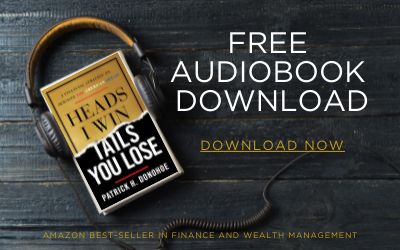Many people view life insurance as a safety net for their loved ones, designed only for use after they’re gone. However, what if your policy could also protect you while you’re still alive?
This is where living benefits riders come in—a powerful feature that allows you to access a portion of your policy’s death benefit in the event of a serious illness. Rather than relying on savings, credit cards, or other risky financial options, a properly structured life insurance policy can provide cash flow precisely when you need it most.
By understanding how to integrate living benefits riders into your financial strategy, you can optimize cash flow, reduce financial risk, and create long-term certainty.
What Are Living Benefits Riders?

A living benefits rider, also called an accelerated death benefit rider, allows you to access part of your life insurance benefit while still alive if you face a serious health condition. This can provide critical financial support without relying on savings or debt.
When Can You Use a Living Benefits Rider?
- Terminal illness: Life expectancy of 12–24 months or less.
- Critical illness: Severe conditions such as heart attack, stroke, major organ transplant, or invasive cancer.
- Chronic illness: The inability to perform two or more Activities of Daily Living (ADLs), like bathing, dressing, or eating.
Instead of waiting for your death benefit to pay out after passing, you can use a portion of it now to cover:
- Medical treatments and care
- Lost income due to illness
- Daily living expenses
- Family or legacy planning needs
How This Fits Into a Bigger Financial Strategy
At Paradigm Life, we believe life insurance should do more than provide a future payout—it should be a dynamic financial tool that supports you throughout life.
A Wealth Maximization Account—a properly structured whole life insurance policy—offers liquidity, tax advantages, and long-term security. Living benefits riders enhance this by protecting your financial stability during unexpected health challenges, ensuring you stay in control of your wealth no matter what life brings.
Why Living Benefits Matter: More Than Just an Add-On

Most financial plans assume cash flow will always be available, but what happens if a serious illness disrupts income, increases expenses, or forces early retirement? Without a plan, medical costs can drain savings, put business assets at risk, and derail long-term financial goals.
How Living Benefits Riders Provide Financial Protection
- Liquidity during crisis – Immediate access to funds for medical bills, treatments, and daily expenses.
- Cash flow protection – Avoid tapping into retirement savings, business capital, or investments.
- Legacy preservation – Keep your financial plan intact without compromising long-term wealth.
Types of Living Benefits Riders & How They Work
Living benefits riders provide financial support when facing serious health challenges. Each type of rider offers different benefits depending on your condition and needs.
1. Terminal Illness Rider
- Available if diagnosed with a terminal illness and given a life expectancy of 12–24 months.
- Can provide up to 100% of the policy’s death benefit, depending on the insurer’s limits.
- Funds can be used for medical care, travel, or family support, with no restrictions on how the money is spent.
2. Critical Illness Rider
- Covers severe medical conditions such as:
- Heart attack
- Stroke
- Organ transplant
- Paralysis
- Advanced-stage cancer
- Provides a lump sum payout to help cover medical expenses, lost income, or essential living costs.
3. Chronic Illness Rider
- Activated if unable to perform two out of six Activities of Daily Living (ADLs), such as bathing, dressing, or eating.
- Works similarly to long-term care insurance, providing financial relief for ongoing medical needs.
- Helps cover home healthcare, assisted living, or nursing facility expenses.
These riders can be customized to fit your financial strategy, ensuring you have flexibility, security, and peace of mind when facing unexpected health challenges.
How to Add Living Benefits Riders to Your Policy

Adding a living benefits rider ensures financial protection in case of illness while keeping your overall wealth strategy intact. Follow these steps to integrate it into your policy:
1. Assess Your Cash Flow & Needs
Before adding a rider, consider:
- How much financial protection do you need?
- What risks would an illness create for your income, savings, or business?
- How does this rider fit into your long-term wealth strategy?
2. Structure Your Policy with a Wealth Strategist
- Not all life insurance policies automatically include living benefits riders.
- Work with a Paradigm Life Wealth Strategist to ensure your policy is structured for maximum liquidity, flexibility, and protection.
3. Implement & Leverage When Needed
- Living benefits riders act as a financial safety net—you don’t have to use them immediately.
- If activated, benefits can be strategically used to cover medical expenses, maintain business cash flow, or protect your long-term financial plan.
By structuring your policy correctly, you gain financial security today while protecting your wealth for the future.
What This Means for You
- Peace of mind – Financial protection during unexpected medical events.
- Greater financial control – Avoid relying on banks, savings, or high-interest loans.
- Preserved wealth – Maintain long-term investment strategies and legacy planning.
While living benefits riders are often overlooked, they are a critical piece of a comprehensive financial strategy. By integrating them into a Wealth Maximization Account, you create certainty, security, and financial independence—no matter what life brings.
Many people rely on health insurance, emergency funds, or disability insurance to handle unexpected medical events. However, living benefits riders offer unique advantages that complement these financial tools.
How Living Benefits Riders Compare
| Feature | Living Benefits Riders | Health Insurance | Emergency Fund | Disability Insurance |
| Covers Medical Costs? | Yes – Can be used for any medical expenses | Yes – Pays for covered treatments | Limited – Only if savings are available | No |
| Covers Lost Income? | Yes – Provides a lump sum payout | No | Yes – But only for a short time | Yes – Provides a percentage of income |
| Requires Separate Savings? | No – Uses policy’s death benefit | No | Yes – Requires personal savings | No |
| Affects Wealth Strategy? | No – Preserves investments and assets | No | Yes – Depletes cash reserves | No |
Why Living Benefits Riders Are Different
Unlike other financial safety nets, living benefits riders provide cash directly to you—without restrictions on how you use it. This ensures:
- Immediate financial relief without depleting investments or retirement funds.
- Flexible spending on medical care, personal expenses, or business needs.
- Protection of long-term wealth, allowing you to maintain financial stability during unexpected health challenges.
While other financial tools play an important role, living benefits riders offer a unique and strategic way to maintain financial security and liquidity when it matters most.
FAQs About Living Benefits Riders
What is a living benefits rider?
A living benefits rider, also called an accelerated death benefit rider, allows you to access a portion of your life insurance benefit while still alive if diagnosed with a terminal, critical, or chronic illness. This provides financial relief for medical expenses, lost income, or other personal needs.
Do living benefits riders increase the cost of my life insurance policy?
Some living benefits riders are included at no extra cost, while others may require an additional premium. The cost depends on factors like age, health, policy type, and insurer guidelines.
Will using a living benefits rider reduce my death benefit?
Yes, any amount accessed through a living benefits rider is deducted from your policy’s death benefit, reducing what is paid to beneficiaries. However, it ensures that you can use your policy when you need it most.
How do I qualify for a living benefits payout?
Eligibility depends on the specific rider:
- Terminal Illness: A doctor must certify a life expectancy of 12–24 months or less.
- Critical Illness: You must be diagnosed with a qualifying condition, such as a heart attack, stroke, or cancer.
- Chronic Illness: You must be unable to perform at least two out of six Activities of Daily Living (ADLs), such as bathing or dressing.
How do I add a living benefits rider to my policy?
Work with a Paradigm Life Wealth Strategist to review your policy options. Riders may be added at the time of purchase or, in some cases, to an existing policy, depending on the insurer’s guidelines.
Are living benefits payouts taxable?
In many cases, living benefits payouts are tax-free, but tax implications may vary based on how funds are used. Consulting with a tax professional can help clarify your specific situation.
Next Steps: Strengthen Your Financial Protection

At Paradigm Life, we believe life insurance should be more than just a policy—it should be a strategic tool for financial empowerment.
Schedule a Consultation Today to:
- Identify which living benefits riders best align with your financial goals.
- Structure your policy for maximum liquidity, flexibility, and long-term security.
- Ensure your financial plan remains resilient and optimized for life’s uncertainties.
Protect your wealth. Maximize your options. Build financial certainty for the future.







